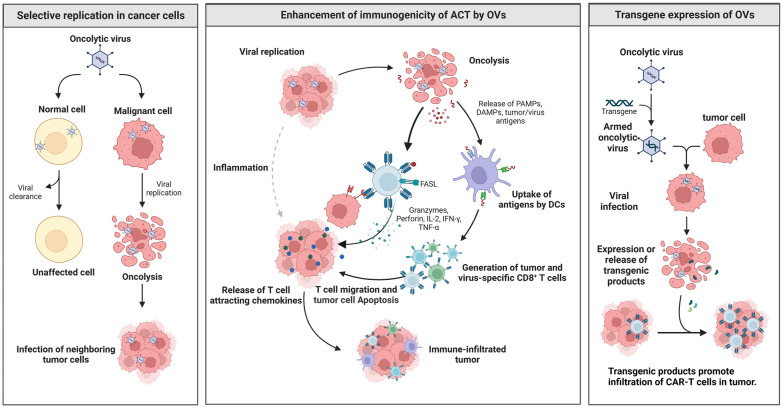Fig. 6.
OV-enhanced ACT. selective replication in cancer cells: OVs are cleared from normal cells, but replicate in malignant cells, leading to cleavage and releasing more OVs to infect the neighboring tumor cells. Enhancement of immunogenicity of ACT by OVs: More OVs released by lytic tumor cells promote the release of PAMPs, DAMPs, and tumor/virus antigens, and then induce uptake antigens by DCs, generation of tumor and virus-specific CD8 + T cells. Meanwhile, OVs trigger CAR-T cells to release more granzymes, perforin, IL-2, IFN-γ, and TNF-α, which synergistically promotes the release of T cell attracting chemokines and T cell migration and tumor cell apoptosis. Transgene expression of OVs: When tumor cells are infected with armed OVs, transgenic cell products are expressed and released to enhance the infiltration of CAR-T cells in the tumor

